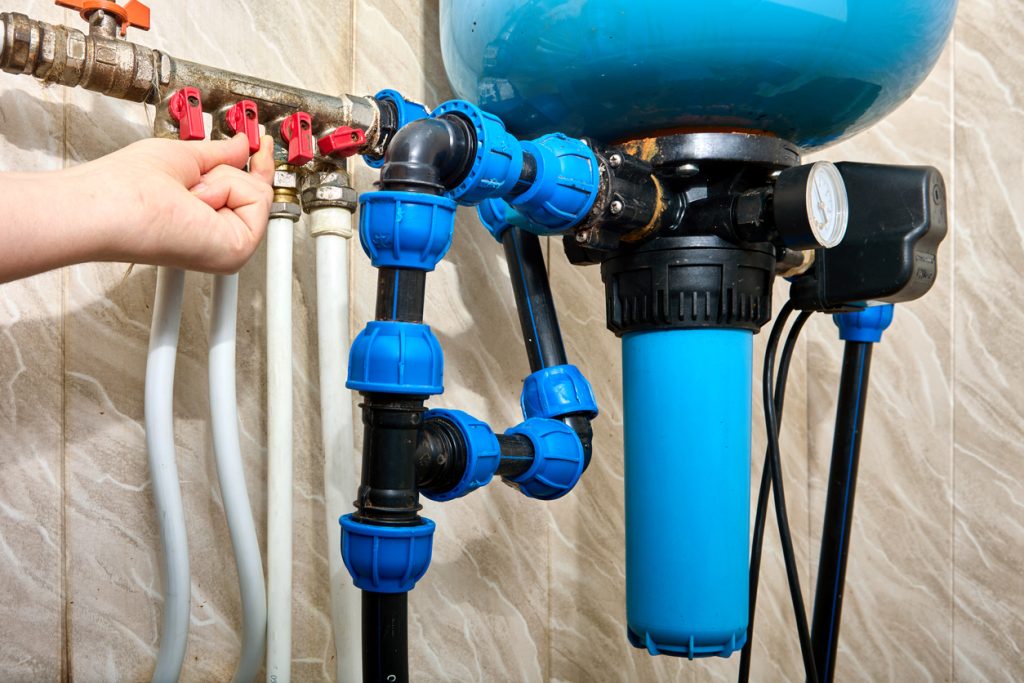How Pipework Size Impacts Legionella Growth in Building Water Systems
In Need of Legionella Services?
Legionella bacteria pose a serious health risk in building water systems. Proper plumbing design plays a crucial role in controlling legionella growth. One critical factor is pipework size – the diameter of pipes significantly influences water flow rates and stagnation risks, which directly impact legionella proliferation.
Our Services
At Pipe Testing Services (PTS), we understand the critical role pipework sizing plays in controlling legionella proliferation in building water systems. Improper pipe diameters can lead to stagnant zones and suboptimal flow rates, creating ideal conditions for legionella growth.
Our team of experts specialises in conducting thorough assessments of plumbing networks to identify potential risk areas related to pipework sizing. We develop customised strategies to optimise pipe diameters, ensuring adequate flow velocities and minimising stagnation risks throughout the system.
In addition to pipework sizing evaluations, our comprehensive services include legionella risk assessments, system audits, temperature management solutions, and disinfection methods tailored to your facility’s needs.
By partnering with PTS Legionella Contractors, you can proactively safeguard your water systems, mitigate legionella hazards, and maintain regulatory compliance.
If you require guidance on pipework sizing, legionella control, or any aspect of water system management, our knowledgeable team is ready to assist you. Contact us today to discuss your requirements and schedule a consultation.
How Pipe Size Affects Legionella Growth
Water flow rate is closely tied to pipe diameter. Larger pipes can lead to reduced flow velocities, allowing water to stagnate. Stagnant water creates an ideal environment for biofilm formation and legionella growth. Conversely, pipes that are too small can restrict flow, hindering effective flushing and disinfection.
Oversized Pipes and Stagnation Risks
Oversized pipes increase the risk of water stagnation. When water demand is low, the flow may not fill the entire pipe circumference, leaving areas untouched. These stagnant zones provide a breeding ground for legionella and other waterborne pathogens, fostering biofilm development and shielding bacteria from disinfectants.

Undersized Pipes and Flow Restrictions
Undersized pipes can restrict water flow, reducing the effectiveness of flushing and disinfection processes. Inadequate flow rates may fail to dislodge biofilms or transport disinfectants throughout the system, enabling legionella to persist in low-flow areas.
In Need of Legionella Services?
Optimal Pipe Sizing for Legionella Control
Optimal pipe sizing is a pivotal aspect of plumbing design, particularly when it comes to controlling the growth of Legionella bacteria in building water systems. The process of determining the appropriate pipe diameter is multifaceted, involving a careful analysis of the building’s water demand, usage patterns, and the specific characteristics of the water system.
Key Considerations for Pipe Sizing:
Peak Demand Calculation
Professionals must assess the maximum water usage expected during peak times. This involves evaluating all water outlets and potential simultaneous demands to ensure the system can handle these scenarios without compromising flow rates.
Minimising Dead Legs
Dead legs, or sections of pipe with no water circulation, are prime locations for bacterial growth. Design strategies aim to eliminate these by optimising the layout and ensuring regular water movement through all parts of the system.
Flow Velocity
Maintaining a certain flow velocity is essential to prevent stagnation. The velocity should be high enough to discourage biofilm formation but not so high as to cause erosion or excessive noise.
Return Loops and Ring Systems
These design elements are incorporated to ensure that water does not remain static in any part of the system. They facilitate continuous movement, even when demand is low, thus reducing the risk of Legionella proliferation.
Advanced Pipe Sizing Strategies:
- Hydraulic Modelling: Utilising advanced software to simulate water flow within the system can help identify potential problem areas and optimise pipe diameters for different sections of the network.
- Material Consideration: The material of the pipes can affect water quality and flow characteristics. For instance, smoother interior pipe surfaces can enhance flow and reduce biofilm adherence.
- Temperature Control Integration: Pipe sizing must also account for temperature maintenance throughout the system, as Legionella bacteria thrive at certain temperatures. Insulation and strategic placement of hot water return lines are critical.
Implementation of Pipe Sizing
- Customised Solutions: Each building has unique requirements, and pipe sizing should be tailored to its specific needs. This includes considering future expansions or changes in usage patterns.
- Compliance with Standards: Pipe sizing must adhere to industry standards and regulations, which provide guidelines on minimum and maximum flow velocities and other critical parameters.
- Collaboration with Stakeholders: Engineers, architects, and facility managers must work together to ensure that the pipe sizing aligns with the overall design and operational goals of the building.
By focusing on these detailed aspects of pipe sizing and incorporating them into the early stages of design, professionals can create water systems that are not only efficient but also significantly reduce the risks associated with Legionella. This proactive approach to plumbing design is essential for maintaining a safe and healthy environment for building occupants.
Plumbing Design Strategies for Legionella Prevention
Alongside appropriate pipe sizing, effective legionella control involves a comprehensive approach:
- Pipe Material Selection: Choosing suitable pipe materials (e.g., plastic vs. metal) based on water chemistry and temperature requirements.
- Eliminating Dead Legs: Incorporating smart fittings and design techniques to eliminate dead legs and low-flow areas.
- Temperature Management: Implementing temperature control strategies to discourage legionella growth.
- Disinfection: Incorporating disinfection methods (e.g., chlorination, UV, ozone) into the system design.
- Routine Monitoring: Regularly monitoring water quality parameters and conducting system inspections.

In Need of Legionella Services?
Legionella Growth & Pipe Size FAQs
What are the key factors to consider when designing plumbing systems to prevent legionella?
The design should ensure proper water flow rates, avoid stagnation, and use materials that do not encourage bacterial growth. Regular system assessments and temperature control are also crucial.
How often should legionella risk assessments be conducted in building water systems?
Risk assessments should be carried out regularly, with the frequency determined by the level of risk and changes in the water system or its use.
Can legionella bacteria be completely eradicated from water systems?
While it is challenging to completely eradicate legionella, implementing a robust control strategy can significantly reduce the risk of legionella proliferation to safe levels.
What role does water temperature play in controlling legionella growth?
Legionella bacteria thrive at temperatures between 20-45°C. Maintaining hot water above 50°C and cold water below 20°C helps to inhibit their growth.
Are there specific plumbing materials that are recommended to minimize the risk of legionella?
Yes, the choice of pipe materials should be based on water chemistry and temperature requirements, as some materials can discourage the growth of legionella.
What disinfection methods are effective against legionella in plumbing systems?
Disinfection methods such as chlorination, UV treatment, and ozone are effective. The method chosen should be part of an overall water safety plan tailored to the specific system.
Contact Pipe Testing Services Today for Legionella Growth Control
Pipework size is a critical factor in controlling legionella growth in building water systems. Oversized pipes can lead to stagnation, while undersized pipes restrict flow and disinfection effectiveness. By working with experts and considering pipe sizing from the design stage, facility managers can implement plumbing systems that minimise legionella risks.
Combining optimal pipe sizing with temperature management, disinfection, and routine monitoring creates a comprehensive approach to safeguarding building water system safety.
For expert guidance on legionella control and plumbing system design, contact Pipe Testing Services (PTS) today. Our knowledgeable team specialises in legionella risk assessments, water system audits, and implementing effective control strategies tailored to your facility’s needs.
Phone – 01922 451646
Email – enquiries@pipetestingservices.co.uk
Address – Unit 27 Birchbrook Industrial Estate, Shenstone, Lichfield, Staffs, WS14 0DJ
Don’t compromise on water system safety. Partner with PTS to ensure compliance and protect occupants from the risks of legionella. Contact us now to schedule a consultation.
